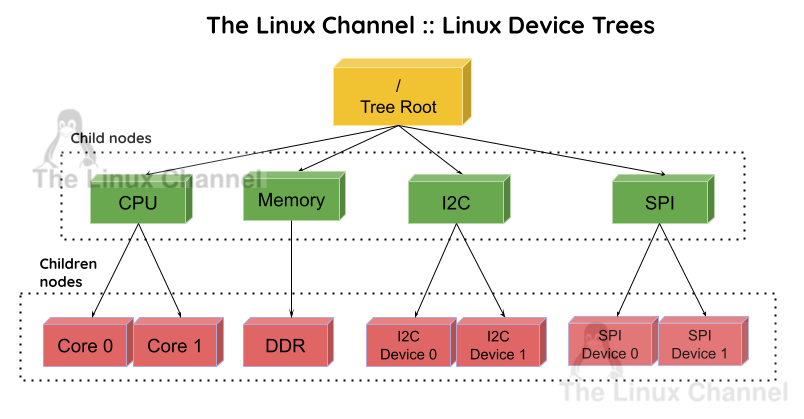The Linux kernel is the backbone of the Linux operating system, and it is responsible for managing the communication between the hardware and software on a system. One of the key components of the Linux kernel is the Device Tree (DT), which is a data structure used to describe the hardware components of a system. Device Tree is simply a data structure that describes the hardware.
A device tree is a hierarchical tree structure that describes the various devices that are present in a system, including their properties and relationships to one another. The device tree is used by the Linux kernel to identify and initialize the different devices on a system, and to provide a consistent interface for interacting with them.
One of the key advantages of using a device tree is that it allows the Linux kernel to support a wide range of different hardware platforms without having to hard-code specific drivers for each one. Instead, the device tree provides a generic interface that can be used to interact with any device, regardless of its specific hardware characteristics.
The device tree is also used to define the relationship between different devices in a system. For example, a device tree might specify that a particular device is a child of another device, or that it is connected to a particular bus or interface. This information is used by the Linux kernel to determine how to communicate with the different devices in a system, and to ensure that they are properly configured and initialized.
Linux kernel driver device trees are typically created and maintained by the kernel developers, but they can also be modified and customized by users to support specific hardware configurations. This can be useful for customizing the behavior of a system, or for adding support for new devices that are not yet supported by the Linux kernel.
In summary, device trees are an integral part of the Linux kernel, and are responsible for describing the hardware components of a system, and for providing a consistent interface for interacting with them. They allow the Linux kernel to support a wide range of different hardware platforms without having to hard-code specific drivers for each one, and make it easier to customize the behavior of a system to meet specific needs.
In fact there is an extensive official documentation provided within the Linux Kernel source itself about Device Trees, which you can refer Linux and the Devicetree – The Linux usage model for device tree data. The same you can also refer in the official kernel.org documentation over HERE. An overview of the device tree data format can be found on the device tree usage page at devicetree.org
I also conduct sessions/classes on Systems and Network Software Programming, Linux Kernel Programming and Architecture. If you are interested, click HERE for more details.
If you have any queries or anything to discuss further on Linux Kernel Programming and writing Kernel modules kindly feel free to contact me.
